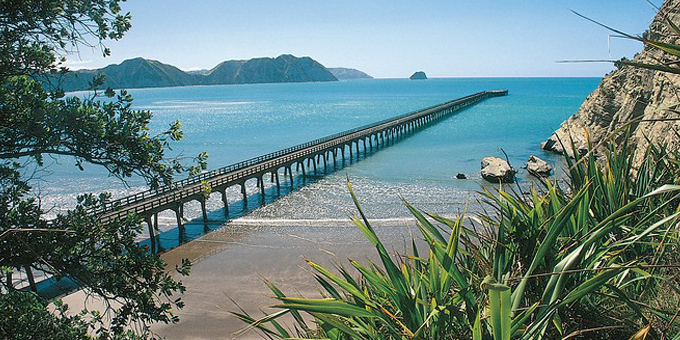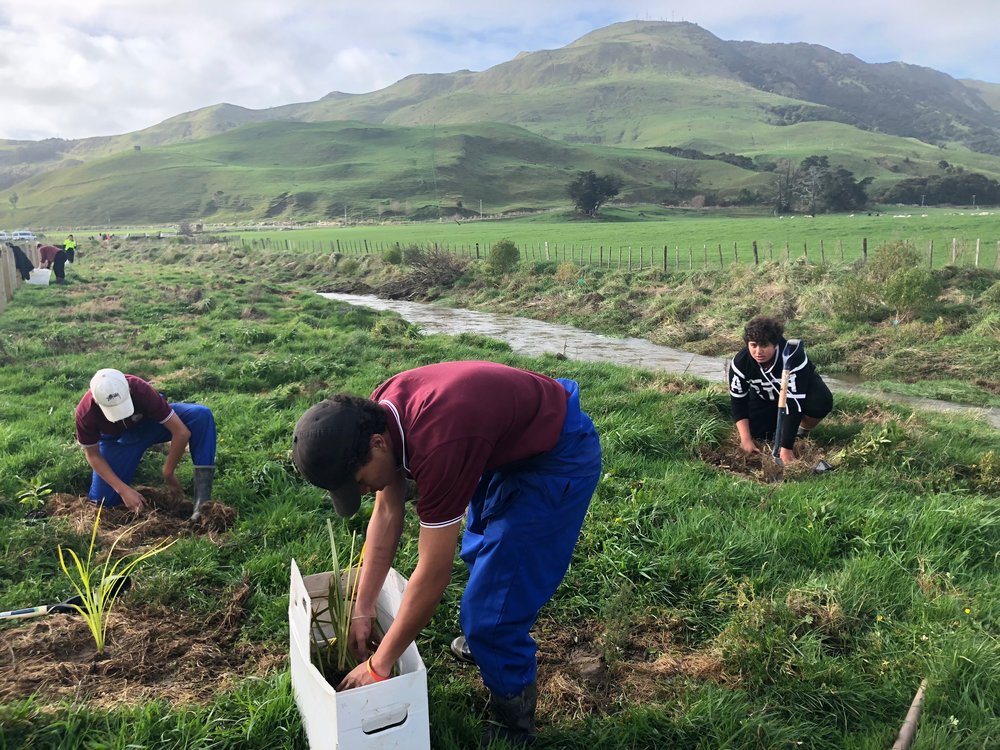




Te mauri o Uawa – The essence of Tolaga Bay
Ka tipu te whaihanga, e hika, ki Uawa. And creativity and innovation flourished, my friend, in Uawa.
It’s only 45km north of Gisborne, but Uawa – or Tolaga Bay as it’s more commonly known – is a community which is fiercely proud of its identity. The community-led development mahi that is done in this place is underpinned by a commitment to honour its history and to serve its future generations.

“There’s an oral history of our place. Te Ahikā ki Ōpoutama. It’s a way for our whanau who aren’t here to engage with us. Because this is what makes us feel connected to our land.”
Shanan Gray of Te Aitanga a Hauti Centre of Excellence, formed in 2017, says that understanding Uawa’s rich history is at the heart of the Trust’s purpose. It drives all of what their community does, has led to relationships with Mahina Village in Tahiti – the village of the Tahitian navigator who landed with Captain Cook on the Endeavour in Tolaga Bay in 1769, and has offered a deeper understanding of Uawa’s whakapapa.
It’s also what is behind the Trust’s intention of helping every person in Uawa reach their full potential; by focusing on their peoples’ connection to their pepeha.
“Without a connection to your pepeha, you can’t know yourself. And if someone doesn’t know themselves, how can a person thrive?”
It has been this commitment to their sense of belonging that has led Uawa to consciously carry out their CLD work in a way that resembles the values of their seven marae: they all have their responsibilities, they know they need to work collaboratively together, and they ensure that each and every one of their wider whanau drives their plans.

GROW COLLABORATIVE LOCAL LEADERSHIP
The population of Uawa is just 900, and with seven marae there were plenty of people willing to step into a leadership role within the initiatives that the Trust runs. However, Shanan explains that while someone does need to take charge, everyone is encouraged to have a voice.
“We have certain people who lead projects but the idea is that there is no hierarchy.”
Representation of each of Uawa’s marae is important, however they work together for collaborative groups such as the Uawa Sports Club, Golf Club, Bowling Club and the Surf Lifesaving Club. Representatives of each marae meet on a monthly basis to talk about each club, each marae and the wider organisation’s aspirations. Information is then fed into the Community Plan by Shanan who also acts as a representative for the entire Te Aitanga a Hauiti Trust.

GROW FROM SHARED LOCAL VISIONS
The Trust worked to develop programmes that suited various ages, and that all served more than one purpose: skills development and connection to te whenua.
As well as a focus on the two local primary schools being identified places to foster interest from a young age, Te Aitanga a Hauiti facilitated a community survey which collected more than 90 responses. These responses helped the Trust to make decisions on what programmes and initiatives would be helpful in their place. Interestingly, safety was a main contender, and therefore the following additional programmes were created:
- Water safety: skills in and around the water and with waka ama
- Youth leadership: giving rangatahi a taste of what life might be like after they leave school
- Kapa haka: a connection to Uawa’s waiata and surrounding iwi, as well as development in singing and performing
- Ti ahi ka (our story, our voice, our place): to keep the home fires burning, creating connection and empowerment. This has included unveiling a Pō in the main street of Uawa, writing an e-Book about the discovery of human remains on the Pa in one of the school’s grounds, and a dancing competition called Dancing with the Pa because there are so many keen dancers in Uawa
“The main goal with this is that we’re always looking ahead and forward to new ideas and ways to connect with our mana.”
WORK WITH DIVERSE PEOPLE AND SECTORS
“One of our most important community-led development projects has been the Uawa Nui Sustainability Project, which is something that’s not going to really have an end date because it’s about looking after the assets we have.”
With the collaboration and advice of environmental scientists, a plan has been developed to restore the Uawa river catchment, an area which was gravely affected by damaging floods in 2018.
Seeking advice from experts in their fields gave Uawa a chance to make plans around what was best for their place.
“There is always room for another voice at our table.”
Despite a positive response from the community to develop CLD programmes, this mahi has not come without its challenges. Because of Uawa’s commitment to its tangata whenua, they wanted to make sure that every one of their wider community members had been consulted; that it was an inclusive approach and that no one was being missed out.
“We stretched ourselves in the community to engage, meet and discuss this process with community groups. This required a significant amount of time and patience which felt difficult at times because we didn’t think we were progressing things fast enough.”
But, as Shanan says, collaboration and consultation is so important. “There are so many people in our community who are representatives on different boards and groups. It’s about working strategically and encouraging those who are also working with our leadership group to always think about how we can make this more of a CLD approach. My advice would be to take your time with planning and ensure you haven’t missed anyone out. We asked ourselves ‘who else?’ a lot.”

“The purpose of our sustainability projects is to achieve long term economic and social benefits and we wanted to learn about the best ways to do that. Now that we have a plan we’re teaching it to our children in school so that they can understand the importance of looking after our land and our river.”
And this really is the essence of Uawa. What drives them to encourage their people to flourish is all about developing a sense of self, be connected to their surroundings, and to instinctively pass their knowledge and mana onto future generations.”
“Relationships with whanau, iwi and hapu are key. Allow the opportunities to arise with your community. Empower their voices! Validating and acknowledging their opinions is our way of insuring our community’s future.”
“We have a succession plan for our young people to pass it on. We want to inspire our people to stay connected to our land and to look after it.”
To learn more about what Te Aitanga a Hauiti Centre of Excellence do, visit their website.
